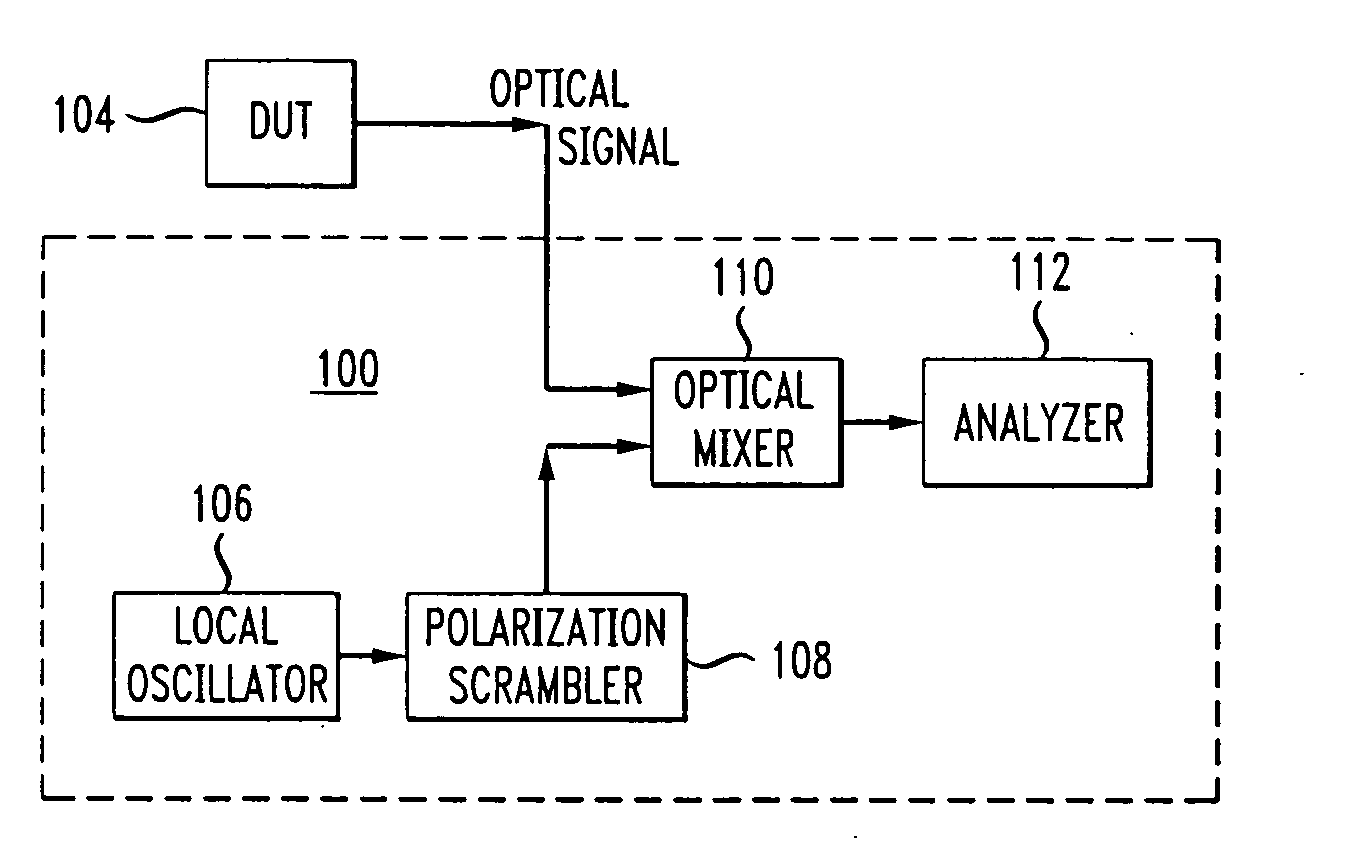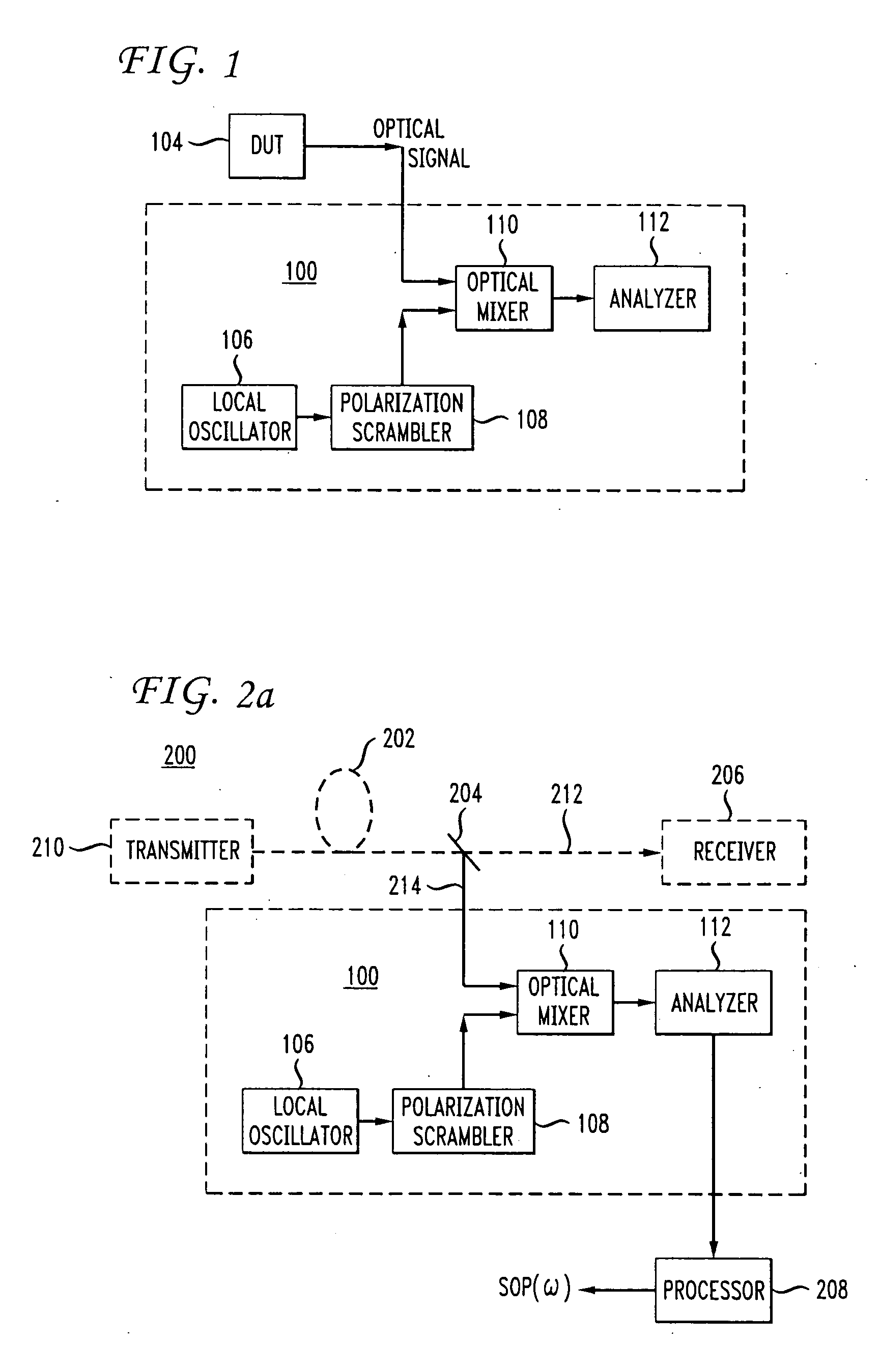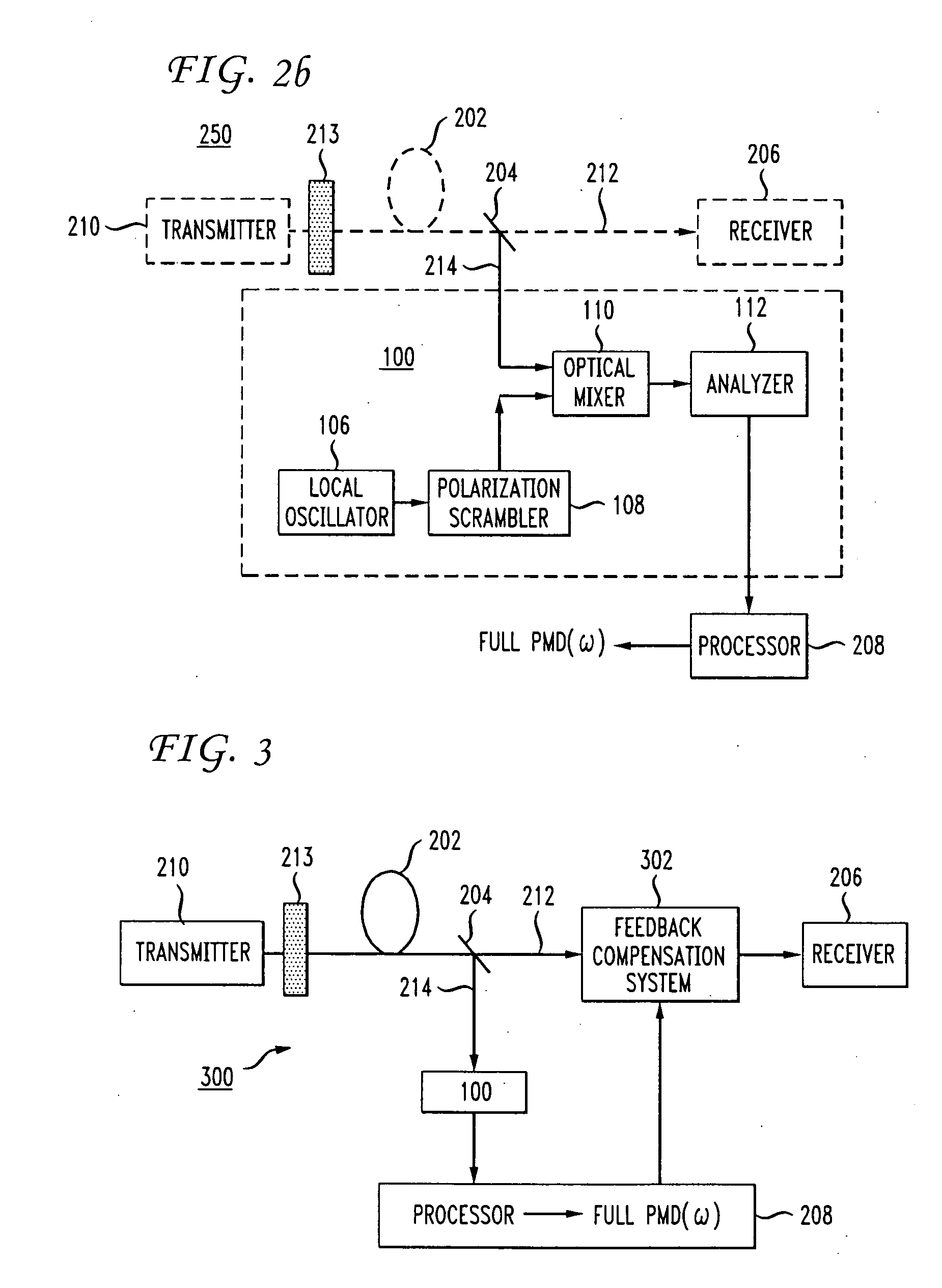Method and apparatus for measuring frequency-resolved states of polarization of a working optical channel using polarization-scrambled heterodyning
- Summary
- Abstract
- Description
- Claims
- Application Information
AI Technical Summary
Benefits of technology
Problems solved by technology
Method used
Image
Examples
Embodiment Construction
[0030] The “states of polarization” may be any set of vectors and corresponding vector coefficients which can be used to completely characterize the polarization state of an optical wave or signal. As is well-known to those skilled in the art, the states of polarization are characterized by the three-component Stokes vector derived from the four Stokes parameters. (One of the four Stokes parameters represents the total intensity in the optical wave under test, and is used to normalize the three coefficients.) Also well-known to those skilled in the art, the Stokes vectors are the unit vectors on the so-called “Poincaré sphere” used to describe the polarization of an optical wave or signal.
[0031] In optical telecommunication networks, multiple working optical channels are typically carried on a single optical fiber. The single optical fiber is included in an optical fiber link, which includes the optical fiber and optical amplifiers and any other optical components between two conne...
PUM
 Login to View More
Login to View More Abstract
Description
Claims
Application Information
 Login to View More
Login to View More - R&D
- Intellectual Property
- Life Sciences
- Materials
- Tech Scout
- Unparalleled Data Quality
- Higher Quality Content
- 60% Fewer Hallucinations
Browse by: Latest US Patents, China's latest patents, Technical Efficacy Thesaurus, Application Domain, Technology Topic, Popular Technical Reports.
© 2025 PatSnap. All rights reserved.Legal|Privacy policy|Modern Slavery Act Transparency Statement|Sitemap|About US| Contact US: help@patsnap.com



